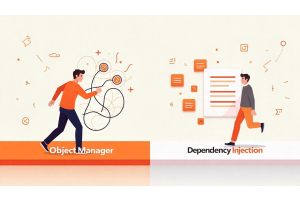AI-Powered Hyper-Personalization: Complete Strategy for 2025

AI-Powered Hyper-Personalization: Complete Strategy for 2025
Customer expectations reached a tipping point. 81% of organizations will use AI-powered CRM systems by 2025, while the AI recommendation engine market will reach $12 billion by 2025. Companies that master AI personalization now capture market share before competitors catch up.
Hyper-personalization will dominate in 2025, allowing businesses to craft customer journeys in real-time based on behavioral data, preferences, and predictive analytics. This goes beyond basic product recommendations to create individualized experiences across every touchpoint.
Table Of Content
Why AI Recommendations Transform Customer Behavior
Traditional personalization uses past behavior to predict future actions. AI-powered hyper-personalization uses real-time data streams, predictive modeling, and behavioral psychology to anticipate needs before customers recognize them.
73% of shoppers believe AI improves their experience because intelligent systems eliminate decision fatigue. Instead of browsing hundreds of products, customers see curated selections that match their immediate context and long-term preferences.
The conversion impact is dramatic. While standard ecommerce sites convert 2-3% of visitors, AI-powered recommendation engines achieve conversion rates up to 45% for personalized product suggestions. This 15x improvement occurs because AI eliminates mismatched recommendations that frustrate customers.
Beyond conversions, AI personalization drives customer lifetime value through three mechanisms:
- Predictive engagement: Systems identify customers likely to churn and trigger retention campaigns
- Cross-sell optimization: AI finds complementary products customers didn't know they needed
- Behavioral adaptation: Recommendations improve as AI learns individual preference patterns
Tip
To enhance your eCommerce store’s performance with Magento, focus on optimizing site speed by utilizing Emmo themes and extensions. These tools are designed for efficiency, ensuring your website loads quickly and provides a smooth user experience. Start leveraging Emmo's powerful solutions today to boost customer satisfaction and drive sales!
Advanced Implementation Strategy
Data Architecture Foundation
Build your data infrastructure before selecting AI tools. Customer data must flow seamlessly between touchpoints to enable real-time personalization.
Create unified customer profiles that consolidate:
- Browsing behavior and session data
- Purchase history and return patterns
- Email engagement and social media activity
- Mobile app usage and location data
- Customer service interactions and feedback
AI-powered solutions enable the collection and analysis of vast customer datasets, turning this data into actionable insights with speed and precision previously unimaginable. Your data quality determines AI effectiveness.
Implement privacy-compliant data collection that builds customer trust while gathering detailed behavioral insights. Transparent data usage policies actually increase personalization acceptance rates.
AI Tool Selection Matrix
Evaluate platforms based on advanced capabilities beyond basic recommendations:
| Feature Category | Essential Requirements / Performance Benchmarks |
|---|---|
| Real-time Processing | Sub-100ms response times, process 10,000+ concurrent users |
| Predictive Analytics | Behavioral forecasting models, 85%+ accuracy in next-action prediction |
| Multi-channel Integration | Unified customer profiles, sync data across 5+ touchpoints |
| A/B Testing Framework | Automated experiment management, run 20+ simultaneous tests |
| Explainable AI | Transparent recommendation logic, customer-facing reasoning display |
| Scalability Architecture | Auto-scaling infrastructure, handle 500% traffic spikes |
Explainable AI (XAI) is gaining prominence as it offers transparency into how AI models make decisions, allowing businesses to build greater customer trust. Choose systems that show customers why specific recommendations appear.
Advanced Integration Techniques
Connect AI engines directly to customer interaction points. Real-time personalization requires millisecond data transfers between systems.
API Integration Strategy:
- Connect recommendation engines to product catalogs for dynamic pricing
- Link customer service platforms for context-aware support experiences
- Integrate email systems for personalized campaign triggering
- Sync mobile apps for location-based recommendations
Data Flow Architecture:
- Stream behavioral data to AI models continuously
- Cache frequent recommendations for instant delivery
- Update customer profiles after each interaction
- Trigger personalization rules based on real-time events
Testing and Optimization Framework
Companies can analyze immediate reactions to promotions or campaigns to adjust tactics swiftly. Build testing systems that adapt recommendations based on instant feedback.
Multi-variant Testing Approach:
| Test Type | Duration | Sample Size | Success Metrics |
|---|---|---|---|
| Recommendation Algorithm | 2 weeks | 10,000 users | Click-through rate improvement |
| Personalization Timing | 1 week | 5,000 users | Engagement rate increase |
| Content Variation | 3 days | 2,000 users | Conversion rate optimization |
| UI Placement | 1 week | 8,000 users | Revenue per visitor growth |
Monitor micro-conversions, not just final purchases. Track email opens, product page visits, wishlist additions, and social shares to understand the full customer journey impact.
Continuous Learning Systems:
- Feed testing results back into AI models hourly
- Adjust recommendation weights based on seasonal patterns
- Update customer segments as behavior evolves
- Optimize for both short-term conversions and long-term loyalty
Scaling and Evolution Strategy
Businesses that embrace trends like conversational AI, predictive analytics, and human-AI collaboration will gain a competitive edge. Plan for AI capabilities that don't exist yet but will emerge by 2025.
Expansion Roadmap:
Phase 1 (Months 1-3): Product recommendation engine with basic personalization Phase 2 (Months 4-6): Content personalization and email campaign optimization
Phase 3 (Months 7-9): Predictive customer service and retention automationPhase 4 (Months 10-12): Cross-channel personalization and AI-powered pricing
Advanced ROI Measurement
Track personalization impact across the entire customer lifecycle, not just immediate conversions.
Comprehensive Metrics Framework
| Metric Category | Key Indicators | Measurement Method | Target Improvement | Immediate Impact |
|---|---|---|---|---|
| Conversion rate, CTR | Real-time analytics | 25-45% increase | ||
| Customer Value | AOV, purchase frequency | Monthly cohort analysis | 30-60% improvement | |
| Retention Metrics | Churn rate, repeat purchases | Quarterly customer surveys | 40-70% better retention | |
| Predictive Accuracy | Recommendation relevance | Customer feedback scores | 80%+ relevance ratings | |
| Operational Efficiency | Support ticket reduction | Help desk analytics | 35% fewer inquiries |
Advanced Analytics Implementation
Calculate personalization ROI using customer lifetime value improvements, not just immediate sales increases. AI personalization typically pays for itself within 6-8 months through reduced marketing costs and improved customer retention.
ROI Calculation Framework:
- Implementation costs: Software licenses, integration work, staff training
- Revenue improvements: Higher conversion rates, increased order values
- Cost reductions: Lower marketing spend, reduced support needs
- Efficiency gains: Automated personalization replacing manual processes
Track competitive advantages that AI personalization creates. Customers who experience high-quality personalization become less price-sensitive and more resistant to competitor offers.
Future-Proofing Your Personalization Strategy
Companies that lead in this space don't chase trends, they operationalize them. Build systems that adapt to emerging AI capabilities without requiring complete rebuilds.
2025 Emerging Trends:
- Emotional AI: Systems that recognize customer mood and adapt recommendations accordingly
- Predictive Commerce: AI that orders products before customers request them
- Conversational Personalization: Voice and chat interfaces with individualized personalities
- Contextual Intelligence: Recommendations based on weather, events, and social trends
Design your AI architecture to integrate new capabilities seamlessly. Modular systems allow rapid adoption of breakthrough personalization technologies without disrupting existing operations.
Privacy and Ethics Framework:Build transparent personalization that respects customer boundaries. AI trends indicate adherence to ethics is expected to see significant progress with a focus on transparency, fairness, and accountability.
Implement customer control mechanisms that let users adjust personalization intensity, see recommendation reasoning, and opt out of specific data usage while maintaining overall system benefits.
Success Measurement Beyond Metrics:Monitor customer sentiment through surveys and social listening. The best AI personalization feels helpful rather than intrusive, creating positive emotional associations with your brand that drive long-term loyalty beyond immediate sales increases.
Conclusion
The window for AI personalization advantage is closing rapidly. Early adopters already capture disproportionate market share while competitors struggle with basic recommendation engines.
Your next 90 days determine whether you lead or follow in the personalization revolution. Companies that start implementation now will have operational AI systems before the 2025 surge in customer expectations makes personalization mandatory rather than competitive. Start with data audit and tool selection this month. Run pilot programs within six weeks. Scale successful implementations before competitors recognize the urgency.
FAQs
What is AI-powered hyper-personalization?
AI-powered hyper-personalization uses artificial intelligence to deliver individualized customer experiences by analyzing behavior, preferences, and real-time data.
How does hyper-personalization differ from traditional personalization?
Unlike basic personalization, which relies on simple rules like names or segments, hyper-personalization uses AI, machine learning, and predictive analytics to tailor experiences in real time.
Why is AI important for hyper-personalization in 2025?
AI enables businesses to process massive datasets, identify hidden patterns, and provide timely, context-aware recommendations that improve engagement and conversions.
Which industries benefit most from AI-powered hyper-personalization?
E-commerce, banking, healthcare, retail, and digital media see the strongest results, as AI tailors offerings, communications, and services to individual customer needs.
How does AI-powered hyper-personalization improve customer experience?
It delivers real-time recommendations, anticipates customer needs, reduces friction, and creates seamless journeys that build loyalty and trust.
What role do data and analytics play in hyper-personalization?
High-quality customer data fuels AI models. Analytics transform raw data into actionable insights, ensuring hyper-personalization is accurate and effective.
Is AI-powered hyper-personalization cost-effective?
Yes. While upfront investments in AI and data infrastructure may be high, businesses benefit from higher ROI, improved retention, and reduced customer acquisition costs.
How can businesses implement hyper-personalization in 2025?
Start with data collection and integration, adopt proven AI frameworks, test personalization strategies on smaller segments, and scale based on measurable success.
What challenges come with AI-powered hyper-personalization?
Key challenges include data privacy, ethical AI use, maintaining transparency, and ensuring compliance with evolving global regulations like GDPR and CCPA.
What is the long-term impact of hyper-personalization?
Long-term, AI-powered hyper-personalization strengthens customer relationships, increases lifetime value, and positions businesses for sustained growth and competitiveness.









